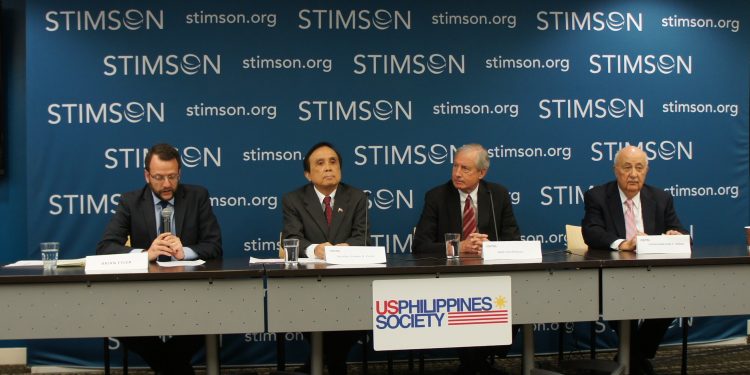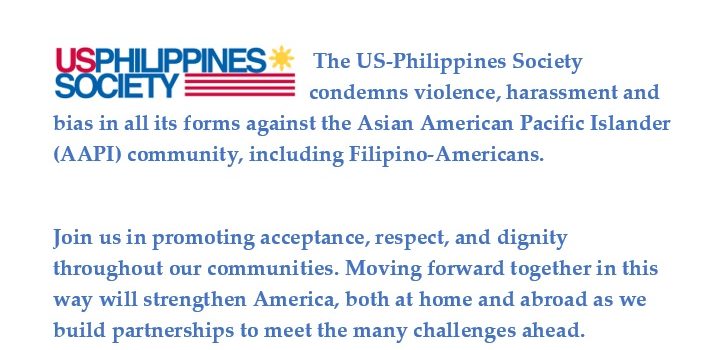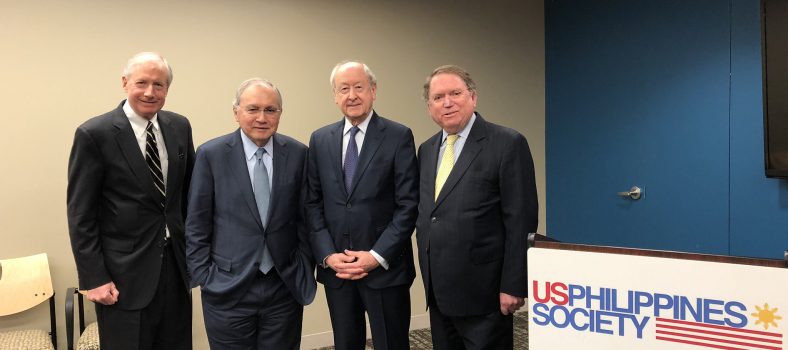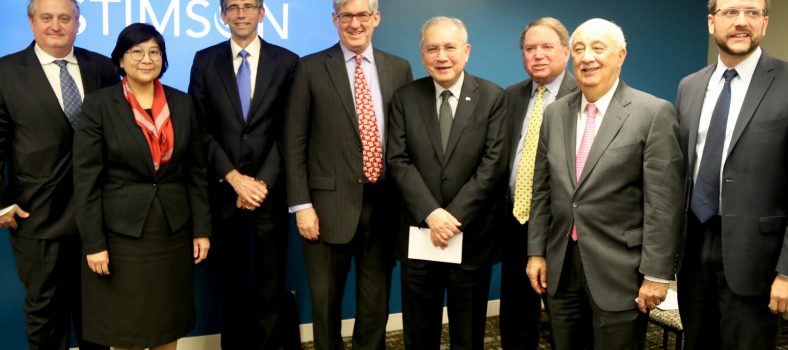Economic Overview by Secretary Ernesto Pernia
Washington, D.C. – At an April 10 forum co-organized by US-Philippines Society and the Stimson Center, Socioeconomic Planning Secretary Dr. Ernesto Pernia assured U.S. audiences that the Philippine economy is one of the faster growth performers in ASEAN averaging 6.5 % growth for the past 10 quarters under the Duterte administration. Outlook for the Philippines remains positive and sustainable with targets of a 7 percent to 8 percent growth rate in 2019 -2022. This growth trajectory is underpinned by structural transformation, policy reforms and a $160 billion “Build Build Build” infrastructure program.
The Secretary explained how growth is increasingly being driven by investments vis-à-vis consumption on the demand side, and by the industry sector and manufacturing relative to the service sector on the supply side. In 2018, capital formation grew at 14 percent surpassing household consumption. Total factor productivity growth pegged at 3 percent is among the highest in the ASEAN region. Inflation rate in February 2019 slowed to 3.8 per cent within the optimal target range. Secretary Pernia pointed that the current investment climate and sovereign credit rating of BBB stable are opportune conditions for domestic and foreign investors. (Weeks following Sec Pernia’s presentation, S &P Global upgraded the country’s credit rating to “BBB+” with a “stable” outlook.)
Amid risks and uncertainties, including the easing of global economic growth, natural hazards and agricultural supply bottlenecks, PH economic managers are moving to diversify export markets, promote regional development, boost domestic spending, and plan for more resilient communities.
An Updated Public Investment Program 2017-2022 valued at US $208 billion identified ample opportunities for public private partnerships and multilateral financing in infrastructure projects including the game-changing flagship projects that are still in pre-investment studies and budgeting and financing stages. Indicative cost of the projects is valued at PhP1,500 billion (US$29 billion) as of February 2019.
Select examples of these infrastructure projects showed economic internal rates of return ranging from 10.5 per cent for the North-South Commuter Railway System to a high 20.1 percent for the New Cebu International Container Port.
Secretary Pernia concluded with a pitch directed at investors to choose the Philippines as an investment destination at a time when President Duterte is fully committed to Philippine Development Plan 2022, a socioeconomic road map transforming the Philippines to upper middle-income economy.
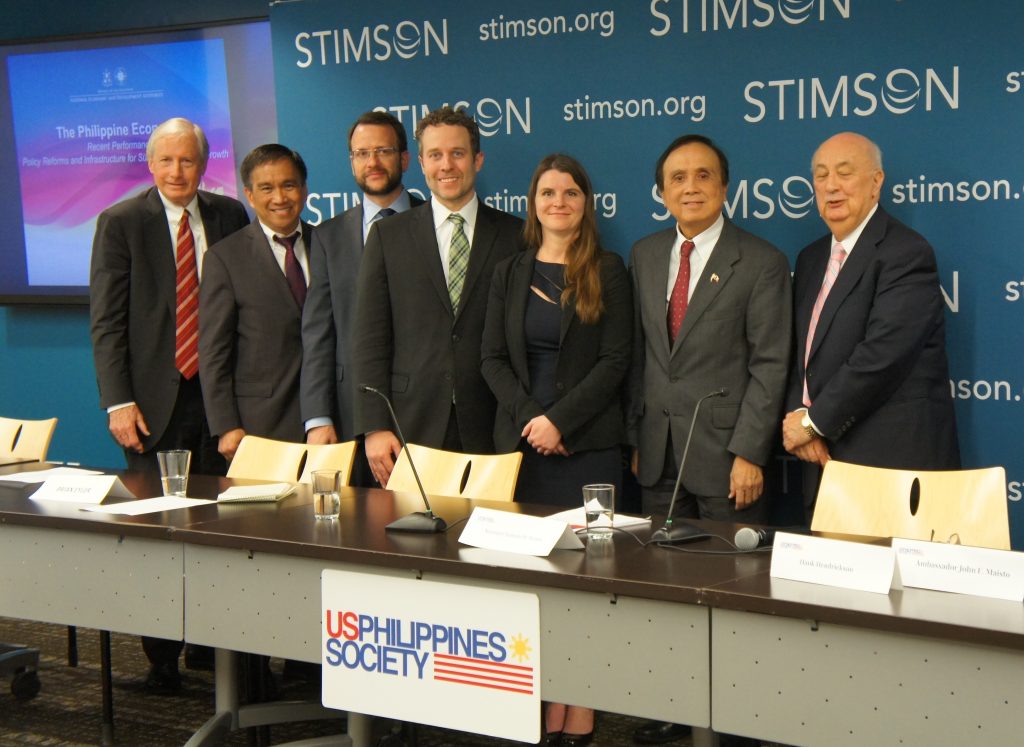
L-R: USPHS Executive Director Hank Hendrickson, Society Director Roberto Llames, Stimson Center Director Brian Eyler, International Trade Specialist David Nufrio, Acting Deputy Director (International Trade Administration) Michele Sylvester Jose, Secretary Pernia and USPHS President Ambassador John F Maisto. Washington, D.C.

